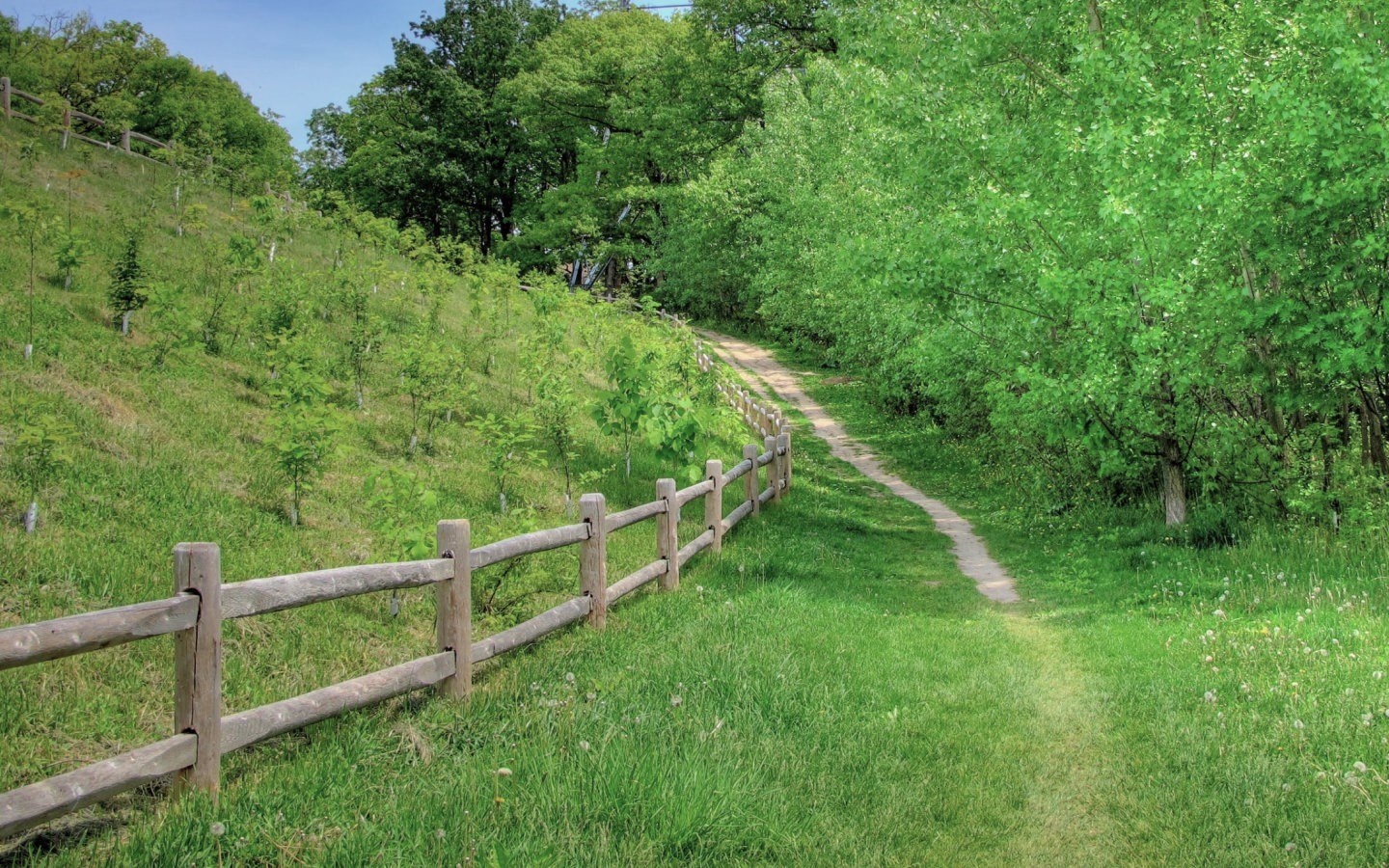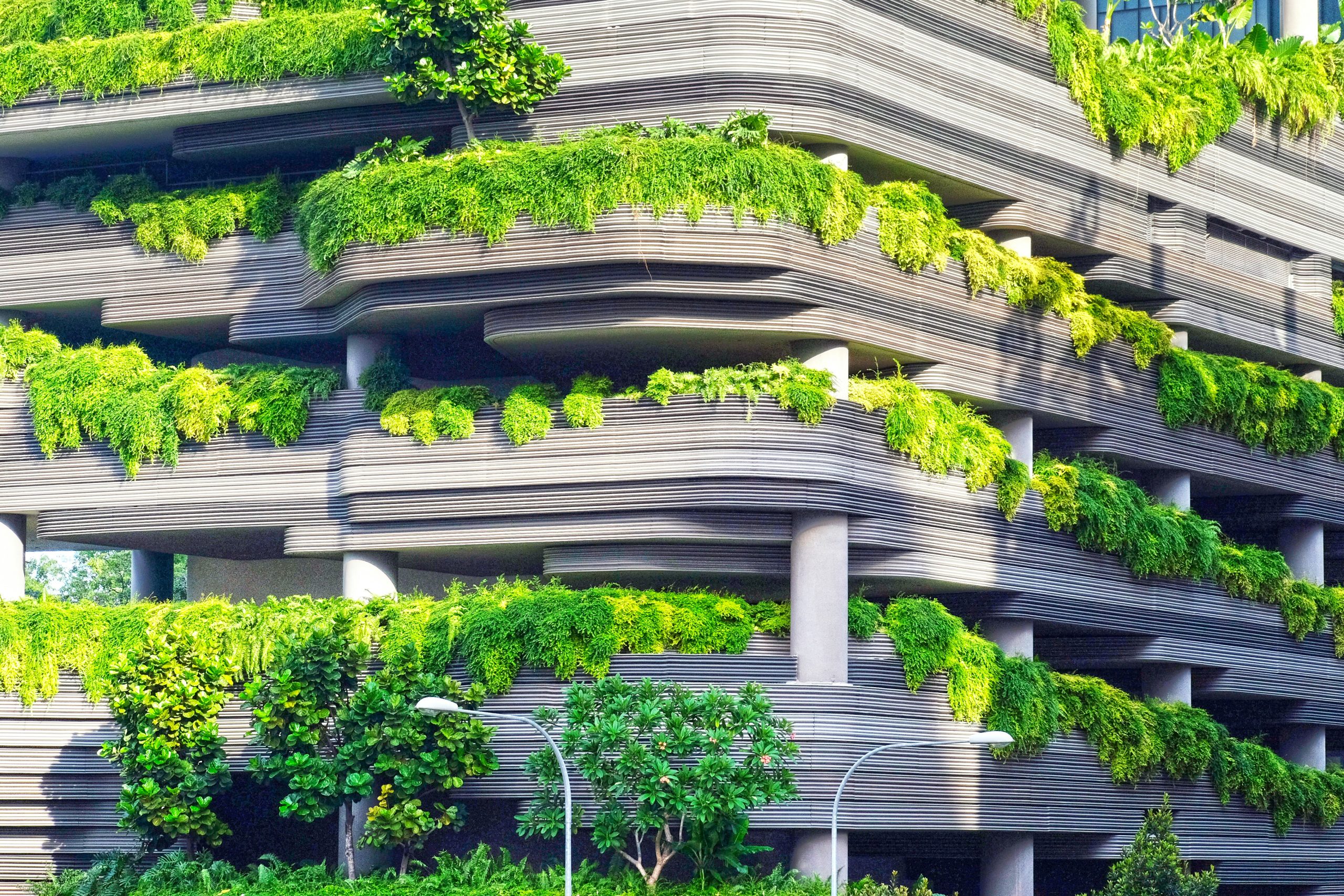Chapter 2: Green Spaces in Concrete Jungles

Warm-Up Questions

- Do you prefer to relax indoors or outdoors?
- How do you feel when you are outside in nature?
- Think about the city you currently live in. What kinds of parks and green spaces does it have?
Read
Living in large cities can be a thrilling experience. There is always something to do. Whether it be a street festival, a delicious restaurant, or an exciting concert, cities provide many opportunities to engage with your community. There is one thing, however, that can be hard to find in a city – a park. Parks and green spaces can provide people who live in cities with large outdoor areas to escape the confines of apartments. They also help our environment and well-being by combating climate change and improving our mental health.

One main way that green spaces can help cities is by reducing the urban heat island effect. This effect happens when the higher number of vehicles, people, and buildings traps heat in the city, causing the temperature to rise by 3-4 degrees Celsius. Introducing green spaces, such as adding plants to roofs and the sides of buildings, can help reduce the heat that is made. These plants can also provide natural insulation for buildings and filter out harmful toxins from rainwater. Reducing the urban heat island effect is important in our fight against climate change.
Increasing the number of parks and green spaces in our cities is also extremely beneficial for cities because it helps reduce pollution. Many parks have trees, and trees are excellent air filters that work to make the air clean and healthy. Urban trees clean the air by filtering out pollutants from vehicles, factories, and businesses. An added benefit to trees is that they help to reduce noise pollution. Tree-lined streets are much quieter than those without because trees act as a barrier to many unwanted sounds, such as cars or loud music. Pollution is a growing problem in urban areas, and it can be greatly reduced by encouraging the growth of a biodiverse[1] tree population.

Spending time in parks and green spaces can also benefit our mental health. Taking a 5- or 10-minute break to visit a park or green space can lower stress levels. Whether it’s a leisurely walk through a park or simply sitting on a bench surrounded by nature, the calming effect of greenery helps reduce anxiety[2]. A simple walk in nature not only lowers our stress levels, but also improves our memory. Our brains benefit from fresh air and natural surroundings[3], leading to better mental clarity and focus.
Parks and green spaces are invaluable to our cities. They help to keep our temperatures low and our city air clean, and they help to promote the mental health of those who visit and live there. Researchers recommend that green spaces should be widely available in cities, and people who have the chance should get out and enjoy the green spaces in their neighbourhoods. It is a great opportunity to connect with friends or encounter a new kind of sport. Whatever the reason for visiting, green spaces provide excellent opportunities to engage with diverse people in the community. A green space is a sanctuary[4] from the stress of city life.
Comprehension Questions
Answer the following questions in complete sentences.
- What is a green space? What are some examples of green spaces that the article mentions?
- The article mentions some of the benefits that trees bring to urban areas. What are two of these benefits?
- Why do cities sometimes have higher temperatures?
- What does the article mean by noise pollution?
- What are two ways that green spaces can help our mental health?
- In your opinion, what is the most important advantage of having parks and green spaces in cities? Use specific examples to support your answer.
- The article describes several ways that parks and green spaces are beneficial in urban areas. Can you think of any other advantages of having green spaces in cities?
Vocabulary
Areas
Available
Benefit
Clarity
Community
Confines
Encounter
Environment
Focus
Mental
Promote
Recommend
Researchers
Stress
Vehicles

Vocabulary Practice
Definitions Exercise
Practise identifying the correct definition for each of the target words.
Parts of Speech Exercise
Read the sentence and guess the part of speech. Turn the card to see if you are correct.
Synonyms Exercise
Drag and drop the synonyms. There are two groups of words.
Fill in the Blanks Exercise
Write in the correct word from the word bank.
Media Attributions
- Sir Winston Churchill Park, Toronto (HDR) by Ryan is licensed under CC BY 2.0.
- gray concrete building covered trees by Danist Soh is licensed under the Unsplash license.
- woman in brown shirt enjoying the sunrise by Nguyen Mei is licensed under the Unsplash license.
References
Arizona State University. (2024). EdPlus Voiceover Generator [Voiceover audio generator].
Henshaw, B. (2024, June 13). Urban heat island effect. In The Canadian Encyclopedia.
Microsoft. (2023). Copilot [Large language model].
Artificial Intelligence Disclosure
- Microsoft Copilot was used as a brainstorming tool for the activities in this chapter.
- The Arizona State University EdPlus Voiceover Generator was used to create the audio recording of the reading, vocabulary words, and parts of speech exercise. Adaptations include modification of speed and/or timing, and comping of output takes.
Area - view the definition in the Longman Dictionary of Contemporary English Online [New Tab]
Confines - view the definition in the Longman Dictionary of Contemporary English Online [New Tab]
Environment - view the definition in the Longman Dictionary of Contemporary English Online [New Tab]
Vehicle - view the definition in the Longman Dictionary of Contemporary English Online [New Tab]
Benefit - view the definition in the Longman Dictionary of Contemporary English Online [New Tab]
Mental - view the definition in the Longman Dictionary of Contemporary English Online [New Tab]
Stress - view the definition in the Longman Dictionary of Contemporary English Online [New Tab]
Clarity - view the definition in the Longman Dictionary of Contemporary English Online [New Tab]
Focus - view the definition in the Longman Dictionary of Contemporary English Online [New Tab]
Promote - view the definition in the Longman Dictionary of Contemporary English Online [New Tab]
Researchers - view the definition in the Longman Dictionary of Contemporary English Online [New Tab]
Recommend - view the definition in the Longman Dictionary of Contemporary English Online [New Tab]
Available - view the definition in the Longman Dictionary of Contemporary English Online [New Tab]
Encounter - view the definition in the Longman Dictionary of Contemporary English Online [New Tab]
Community - view the definition in the Longman Dictionary of Contemporary English Online [New Tab]

